Soviet dreams of the future
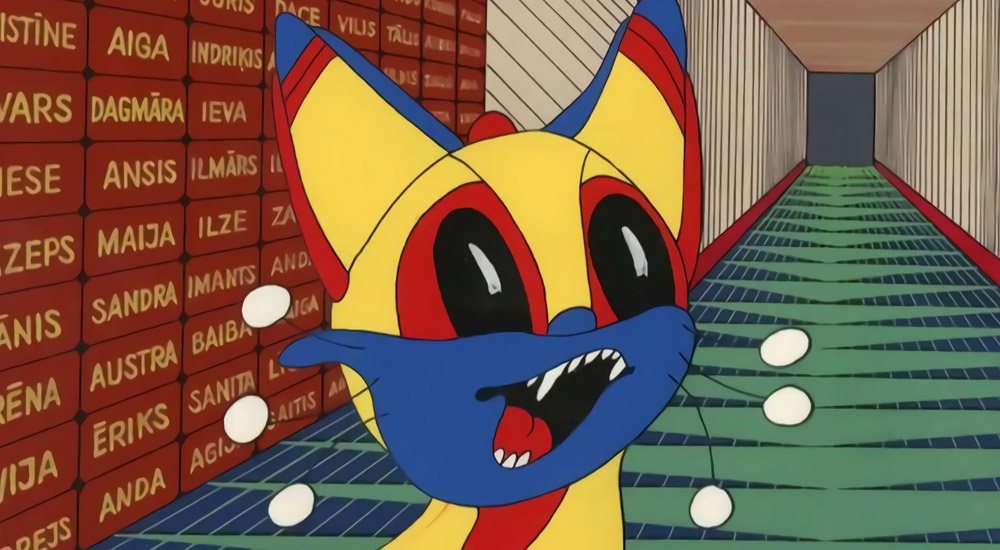
Remember the charming cat, which sneezed in the screen saver of the Soviet cartoon? We remember, and found it - along with a heap of other hand-drawn fiction. As a child, she was frightened and discouraged because she raised serious, adult themes. It is time to revise the old cartoons to find out what kind of future they dreamed of in that country.
1977: Polygon
Animator Anatoly Petrov had a hand in many famous Soviet cartoons, from "The Bremen Town Musicians" to "Boniface's Vacation". His independent work was much more interesting: he painted realistic three-dimensional graphics. The most famous example of Petrov’s style was the short cartoon “Landfill” based on the anti-war story of science fiction North of Gansovsky.
The plot is simple: the nameless inventor came up with an invulnerable tank that reads the thoughts of the enemy. Field tests of perfect weapons are taking place on a tropical island - apparently, this is a reference to the atolls of Bikini and Enyvetok. The military commission includes a general, under whose command the son of the hero died. The tank destroys the military, and then its revengeful creator.
')
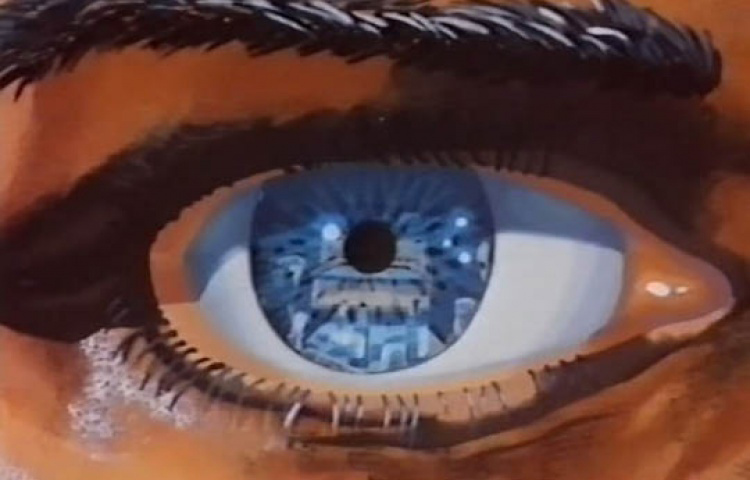
To create a volume effect, the characters were painted on two layers of celluloid, and one was shot out of focus. In tense moments, a blurry image becomes sharp. The camera moves all the time, freezing only briefly. There is no blood in the frame, and the only musical accompaniment consists of Ahmad Zahir’s famous song “Tanha Shodam”. All this together conveys the sensations of anxiety, fear and longing - the sensations of that epoch when “Doomsday Clock” showed 9 minutes before midnight. By the way, in 2018 the arrow was transferred to 23:58 - so the prediction came true?
1978: Contact
In 1968, Canadian animator George Dunning shot the famous “Yellow Submarine”. In the Soviet Union, the cartoon came only in the 80s on pirate tapes. However, back in 1978, director and artist Vladimir Tarasov shot his own vivid musical phantasmagoria. Short, but in the main character, John Lennon is definitely guessed. This is the merit of the artist Nikolai Koshkin, who "quoted" a Western musical cartoon.
Soviet "Lennon" - the artist who got to the open air. In nature, he meets an alien, also in his own way an artist. The formless creature reincarnates into the objects seen. At first the person is frightened, but then teaches the guest to whistle the melody “Speak Softly Love” from “The Godfather”. Unlike his distant relatives from the "Annihilation", the alien is friends with the man and goes with him into the sunset.
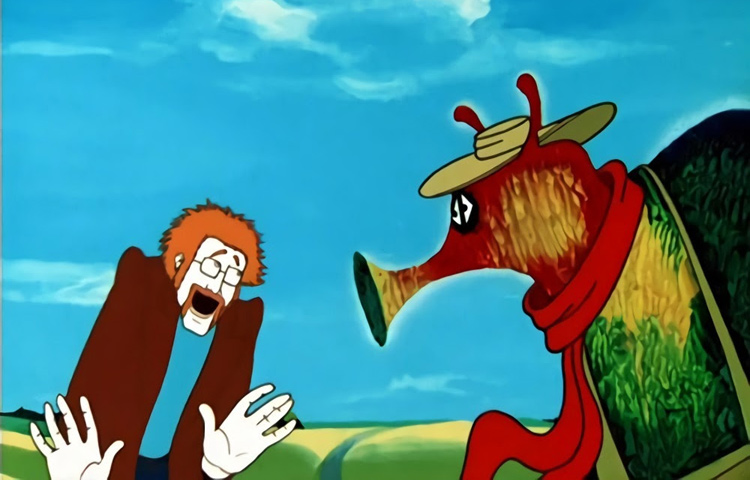
Life hacking: turn off the original “Contact” soundtrack and turn on Lucy in the sky with diamonds. You will notice that the video sequence of the cartoon almost perfectly falls into the music.
1980: The Return
“The Return” is another Tarasov cartoon. He describes everyday events in terms of science fiction: the Valdai T-614 spacecraft got into a meteorite stream and was damaged, due to which it could be planted on Earth only in manual mode. The pilot is advised to sleep before landing. He plunges into a deep sleep, attempts to wake him fall through. However, when the ship’s course passes over the home in the village, the astronaut somehow feels it, wakes up and lands the ship.
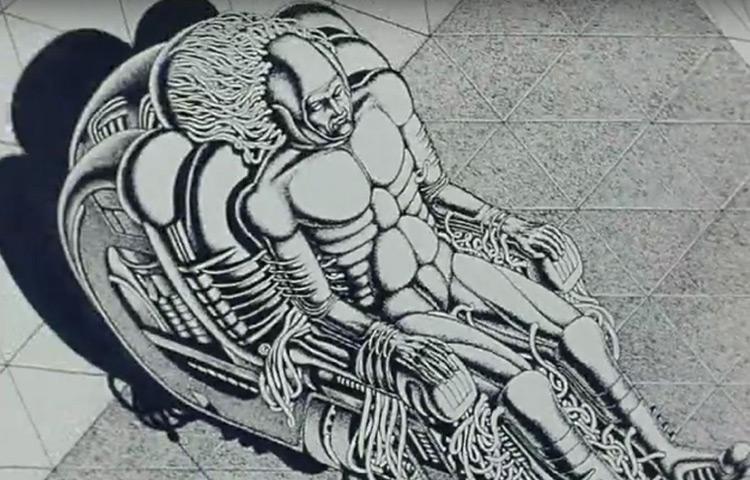
It is not clear whether the hero’s unconsciousness threatened disaster. The music (Gustav Mahler's 5th symphony) eloquently indicates that the situation is alarming. The authors were advised by cosmonaut Alexei Leonov, therefore the technical side of the flights is accurately reflected in the film. At the same time, realism and everydayness are broken by screaming references to the “Alien”, which came out just a year before. The space truck resembles the Gigerian alien ship from the inside, and the pilot himself is not much like a man. Short cartoon scares no less than the classic scene with hypocrisy.
1981: "Space Aliens"
Famous science fiction brothers Strugatsky wrote several scenarios for cartoons, but the Soviet censorship "hacked" them all. All but one, which Arkady Strugatsky wrote with his friend, writer and translator Marian Tkachev. It was the script of the first series of "Space aliens".
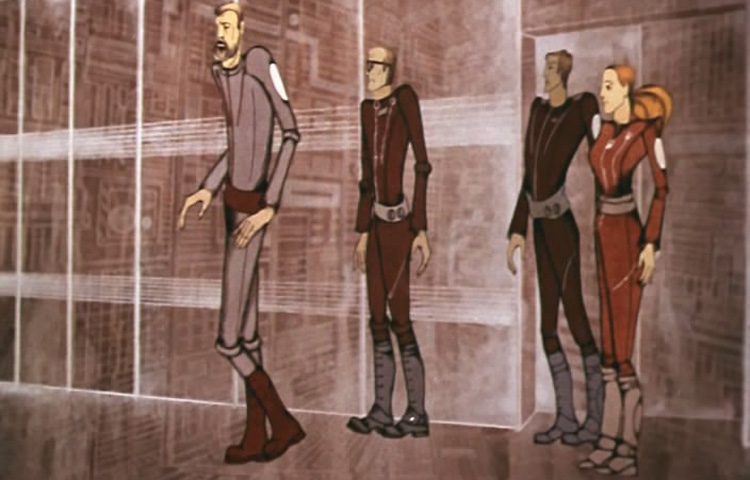
Plots are promising: an alien ship descends to Earth, alien robots send black robotsonds. A group of scientists is trying to figure out what space visitors want. Then it turns out that they want to share technology. "Arrival" ordered?
Drawn in an avant-garde constructivist style, this cartoon lasts just over fifteen minutes. It seems that much longer, because the pace of events on the screen is uneven and slow. The lethargic calm with which the actors voice overly long phrases, especially emphasize this characteristic feature of "Aliens".
“Experimental” philosophical parables were one of the favorite genres of Soviet animators. Nevertheless, the “Aliens” are crossing the line between “this is deep” and “this is boring.” Strugatsky seems to understand this himself, so the second episode was shot without him. In it, aliens experience the moral stamina of people. People stand the test, and everything seems to end well. And it's good that it ends.
1984: “It will be a gentle rain”
In 1950, the American writer Ray Bradbury wrote one of the most famous post-apocalyptic stories in the history of the genre. “It will be a gentle rain” tells about how the robotic “smart home” continues to work after the explosion of the atomic bomb. After 34 years, Uzbekfilm shot a short, emotional cartoon based on the story.
Bradbury’s text is conveyed with only some creative liberties. For example, in the story after the disaster some time passed - days or a month. In the cartoon, the robot, who does not understand what happened, shakes out the ashes of the owners of their beds, which were incinerated the day before. Then a bird flies into the house, the robot chases after it and accidentally destroys the house.
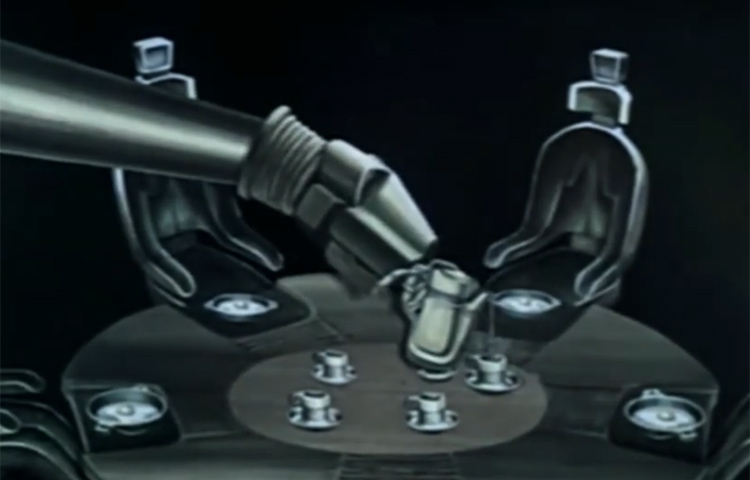
This film adaptation has won prizes of three international festivals and one all-Union. The actor and director Nazim Tulyakhojaev from Tashkent acted as the director and screenwriter of the cartoon. By the way, this was not the end of his work with the Bradbury material: three years later he made a film based on the story “Veld”. Of the two screen versions, the audience remembers exactly “It will be a gentle rain,” because the horror of the global war is difficult to interrupt or dispel.
1985: The Contract
Soviet animators liked to film the works of foreign science fiction writers. As a result, bright projects appeared, the true fruits of love. Such as the cartoon "Contract" based on the eponymous story by Robert Silverberg. Bright, avant-garde style, so beloved by the director Tarasov, resembles pop art. Musical accompaniment - excerpts from the jazz composition I Can't Give You Anything but Love, Baby performed by Ella Fitzgerald.
Both the original and the cartoon begin the same way: the colonist fights off monsters on an uninhabited planet. He comes to the aid of a robot salesman, who, it turns out, released these monsters in order to force a person to buy his goods. The colonist communicates with the company that sent him to the planet, and finds out that under the terms of the contract he cannot trade with the robot. In addition, for the shipment of everyday things like razors, they will tear off three skins, since they are only required to provide it with necessary things for life.
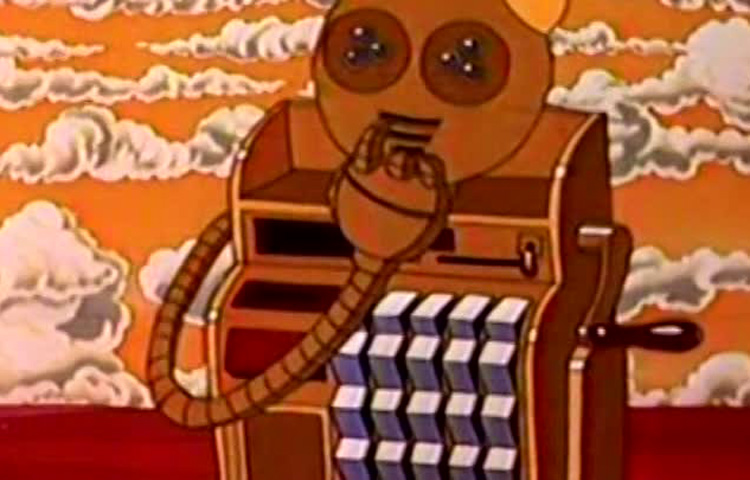
Then the plot of the original and film versions diverge. In the story, a robot threatens to shoot a colonist. The colonist cleverly gets out of the situation, demanding money from the company to save his life, and after refusing to break the contract and declare his planet as a pioneer. Even the ironic approval of capitalist practices was taboo for the Union. Therefore, in the cartoon, the companies of the colonist and the robot unleash a war. The robot sacrifices itself to warm the person under an unexpected snowfall. Despite the obvious ideological promise, the cartoon leaves a pleasant impression.
1985-1995: "Fantadrom"
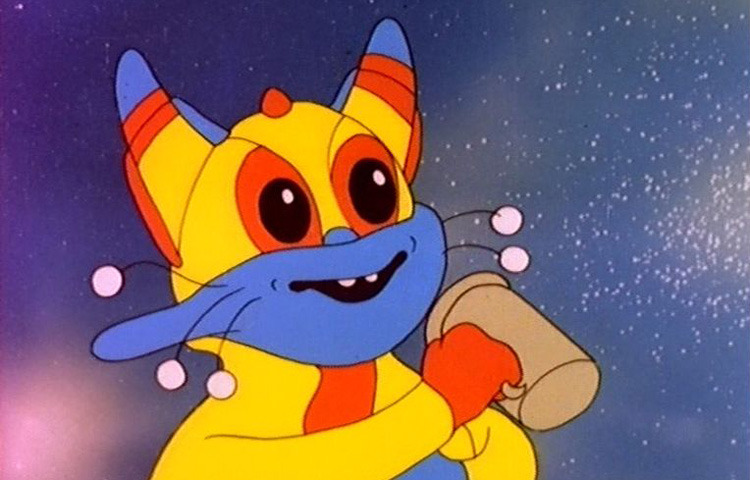
The children's cartoon series Fantadroms looks like it was painted by western animators. In fact, the first three series released "Telefilm-Riga", and then another ten came to the Latvian studio Dauka.
The main character of “Fantadrom” is the robot cat Indriks XIII, who is able to change shape. It is he who sneezes at the beginning and at the end of each series. Together with his friends, the space-cat saves aliens and people from unpleasant situations like fires, misunderstanding or a sudden lack of salt in breakfast. The plots of “Fantadrom” are opened without words, only by images, music and sounds, as in Disney's “Fantasy”.
The first three "Soviet" series look serious: they focus on the spacecraft and metropolis where Indriks lives. The new ten series is focused on children, so the focus has shifted to what is called a slapstick comedy. If the studios had more resources and opportunities, it’s easy to imagine that Fantadroms could become a sort of space Tom and Jerry. Unfortunately, the potential of the series remained unfulfilled.
1986: "The Battle"
Another adaptation of Western fiction, this time - the story of Stephen King. A former military man, who became a killer, kills the director of a toy factory. After completing the order, he receives a package with toy soldiers, made in the factory of the victim. Soldiers somehow come to life and attack the killer. The fight ends with the victory of toys, since the miniature thermonuclear charge appeared in the set.
Cartoon made in the technique of total animation. This means that, together with the characters, the backgrounds move and change to convey camera movement. The costly and time-consuming method is used in hand-drawn animation rarely, but accurately. "Battle" total animation gave incredible dynamism. A short cartoon looks no worse than “Die Hard”, which was released two years later.
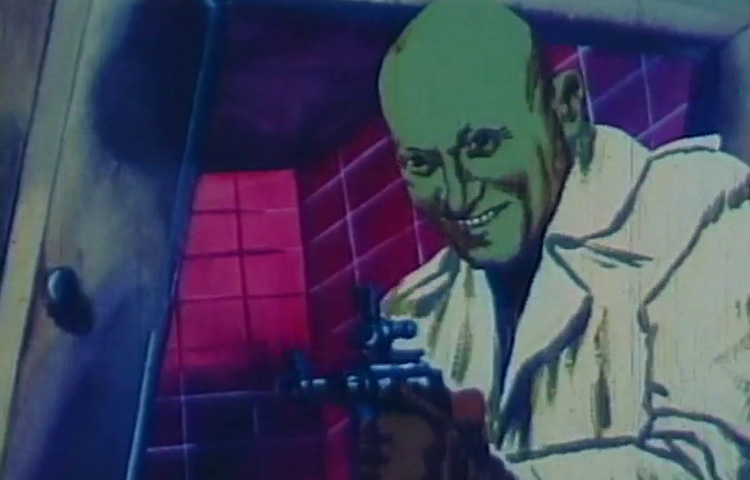
The attentive viewer will find in the first minute of the cartoon a reference to the scene driving along Tokyo interchanges in Tarkovsky's Solaris. The futuristic landscape with an endless maze of roads underlines that everything is happening in the near, gloomy future.
1988: The Pass
Talking about the fantastic Soviet animation, it is impossible not to mention the cult "Pass". The cartoon was filmed on the first chapter of the fantasy story Cyrus Bulychev “The Village”, and the author himself wrote the script.

"The village" tells about the fate of the space expedition, whose ship crash landed on an unknown planet. The surviving people had to flee the ship, fleeing radiation from a damaged engine. People founded the village, learned how to hunt with bows and arrows, raised children and made attempts to return over the pass to the ship over and over again. In the cartoon, a group of three teenagers and an adult goes to the ship. An adult dies, and children better adapted to the dangerous world get to their destination.
“Pass” stands out even against the background of other avant-garde science fiction cartoons of that time. The graphic for the film was drawn by the mathematician Anatoly Fomenko, famous for controversial historical theories. To show the terrible alien world, he used his illustrations for The Master and Margarita. The music was written by Alexander Gradsky, including a song to the verses of the poet Sasha Cherny.

The director of “Pass” was made by Vladimir Tarasov, already mentioned several times in this compilation. Tarasov read "The Village" in the journal "Knowledge is Power" and imbued with the question of what actually represents human society. The result was a scary and fascinating cartoon with an open ending.
1989: “Tigers can be found here”
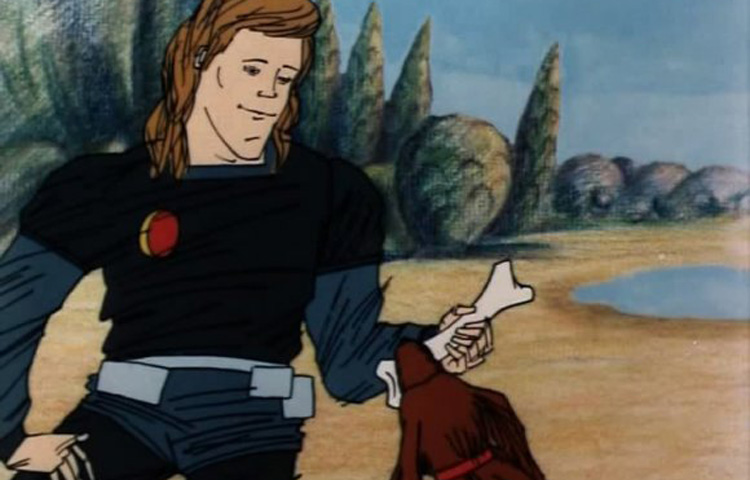
Long before James Cameron shot his Avatar, Ray Bradbury wrote a short story on the same topic. The human ship arrives on an uninhabited planet in order to extract minerals. A wonderful alien world has a mind and hospitably meets earthlings. When a representative of the company sponsoring the expedition is trying to start drilling, the planet sends a tiger at him. Expedition flies away, leaving one young astronaut.
The Soviet animators managed almost without discrepancy to transfer the philosophical history of Bradbury to the screen. In the cartoon, the evil leader of the expedition before death has time to activate the bomb. Earthlings sacrifice themselves to save the planet: they load a bomb on a ship and fly away. Criticism of predatory capitalism existed in the original text, so a dramatic twist was added to add action to the plot. In contrast to the "Contract", in this cartoon did not appear opposite meanings.
1991-1992: The Geons vampires
Soviet animation did not die immediately with the collapse of the Union. In the 90s, several obviously “Soviet” sci-fi cartoons managed to come out.
In 1991 and in 1992, director Gennady Tishchenko presented the cartoons "Vampires of Geona" and "Owners of Geona". The script was written by himself according to his own story. The plot is as follows: the inspector of the Cosmo-Ecological Commission (KEK) Yanin is sent to the planet of Geona. There, local pterodactyls (“vampires”) bite the colonists and prevent the interstellar concern from developing mineral deposits. It turns out that the planet is inhabited, local intelligent creatures live under water in symbiosis with vampires and other fauna. The concern leaves the planet because its activity harms the environment.
The most striking feature of cartoons: two American characters, sketched from Arnold Schwarzenegger and Sylvester Stallone. The giant hand drawn Arnie is a bit like the hypertrophied comic book superheroes from the 90s. Next to him, the bearded Russian Yanin seems to be a child. Against the background of an unexpected Hollywood cranberry, the film’s main philosophical message is somewhat lost.
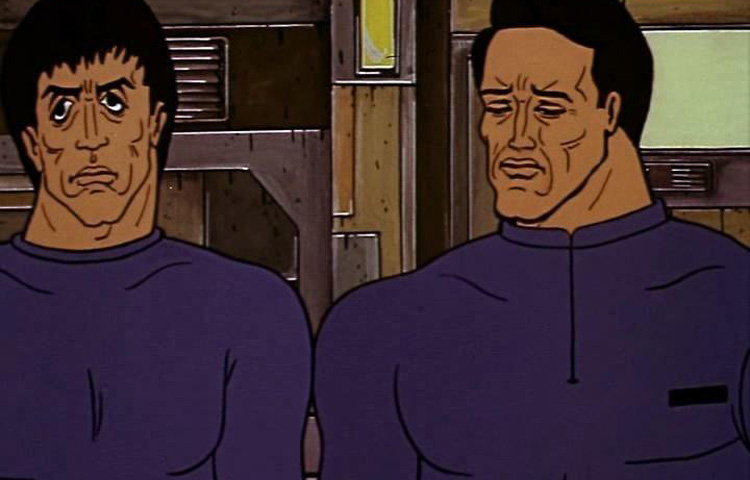
Cartoons were supposed to be a whole series called Star World. At the end of the second episode, Yanin optimistically states that people will still return to Geon, but his words did not come to pass.
1994-1995: AMBA

A couple of years after Geona, Tishchenko made a second attempt to continue the space saga. Two series of the cartoon "AMBA" talk about how the scientist has developed a way to grow cities from biomass. One such village, “AMBA” (Automorphic Bioarchitectural Ensemble) was raised in the Martian desert, and the other was planted on a distant planet. Communication with the project was interrupted, and they sent an inspector Ioann, who was already familiar to us, with a nameless partner.
The visual style of the film has become much more "western". However, the content remained true to the course on solid Soviet science fiction. Tishchenko is a fan of science fiction writer Ivan Efremov. In two short animated films, the director tried to accommodate the idea that the future of technological civilization would end (hence the name).
There are serious problems with the exposition, this is a typical case when people talk about what is happening and not show it. There is enough battle and heroism on the screen, but the pace of events is “ragged”: first, alien tentacles attack the heroes, then they patiently listen to a story about where these tentacles came from.

Perhaps in the third part of the "Star World" would be able to get rid of the shortcomings of the previous ones. Unfortunately, the Soviet tradition in the new millennium has finally disappeared, so now all these cartoons are history.
Did your favorite sci-fi cartoon fall into the list? Tell us about it in the comments.


Source: https://habr.com/ru/post/453890/
All Articles